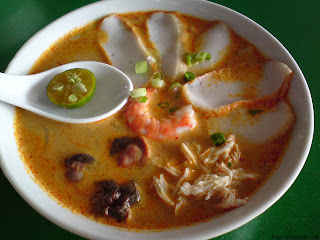zoologico de Singapur
The Singapore Zoo (Former Singapore Zoological Gardens) is acclaimed as one of the world's most spectacular zoos. The use of natural barriers like streams, rock walls and vegetation to separate animals from visitors enhances the "open" zoo concept. Spreading over 28 hectares, it is home to over 3,600 mammals, birds and reptiles, including rare and endangered species. The Zoo's orang utan breeding programme has created a large community of these gentle, endangered species.
A regular tram service that covers the entire Zoo offers an excellent overview of the attractions. The commentary provides useful information. However, to fully appreciate the zoo, the tram introduction should be complemented by a walking tour.
isla Sentosa
Beach lovers can enjoy exciting games and sea sports along the 3.2-km long sandy beaches stretching across Siloso, Palawan and Tanjong. You can indulge in a host of leisure activities such as cycling, in-line skating, canoeing, horse riding or simply unwind at the beach pubs. On weekends, the beach pubs will spring into action as beach volleyball fans flock to Siloso Beach for their favourite game. In recent years, Sentosa had also gained international fame for holding some of Singapore's most exciting themed events like the Sentosa Sandsation (an international sandsculpting event), Black Moon Foam Parties, Zouk Out Dance Festival and Sentosa's yearly Countdown Parties right here!
Laksa
Ingredients
Paste:
Shollots ,Candle nuts ,Garlic ,Tumeric ,Dried Chillies
and:
dried shrimps ,lemon grass - bruised ,laos - bruised ,tomatoes ,fish sauce ,fried bean,curd (tao pok) - quartered up, laksa leaves - absolutely crucial fish balls (or sliced boiled chicken) ,cockles - fresh ,stock ,salt ,prawns ,coconut milk ,thick rice noodle
 |
| the ‘original’ laksa |
 |
| The original Hokken |
The Marina Mandarin Singapore is a world-class, 5-star luxury hotel that enjoys an excellent location in the heart of the city.
With breathtaking views of Marina Bay and the financial district, the hotel also offers convenient access to the Marina Square Shopping Mall, and is directly opposite the Suntec Convention & Exhibition Centre and The Esplanade – Singapore’s Performing Arts Centre.
With a distinctively majestic atrium soaring through 21 levels of the hotel, Marina Mandarin Singapore is imbued with a philosophy of providing Asian grace, warmth and care in an atmosphere of relaxed elegance.
 |
 |
Pan Pacific Singapore Hotel, with its proximity to the Central Business District, is located in the heart of Marina Bay, a shopping haven of over 500 shops and restaurants near the Singapore River. The hotel offers direct access to the Singapore International Convention and Exhibition Centre via a sky bridge. In fact, this luxury hotel in the heart of Singapore, is walking distance from many historic landmarks, such as the Padang,stage to some of the most significant national events, the Cenotaph and the commemorative landing site of Sir Stamford Raffles - founder of modern Singapore. |








































